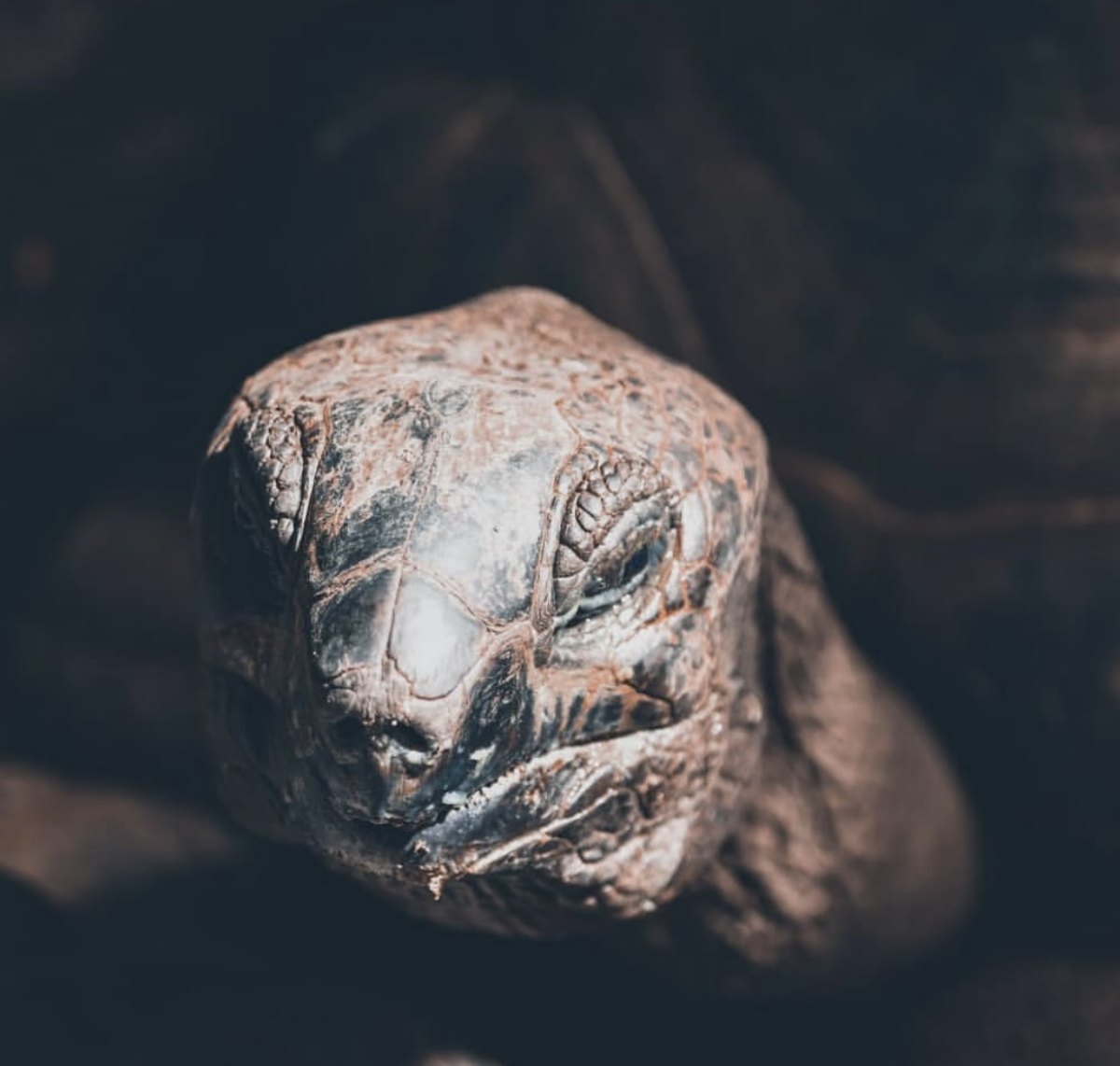
Close-up of a giant old tortoise face

The Aldabra giant tortoise is the largest species of tortoise on the planet. It surpasses in size and weight the Galapagos giant tortoise. The carapace, of beige or brown color, presents a bulging shape. It is formed by a nuchal plate, five vertebral plates, four costal plates, 23 to 25 marginal plates and a last supracaudal plate. The plastron is clearer and concave in the male. This carapace which seems invulnerable is in fact only a thin association of horny plates directly connected to the nerve endings. The limbs, robust and thick, equipped with strong claws, are powerful enough to support the weight of the animal. As well as the small head with a horny snout, they are covered with small scales. The neck is long for its size, which allows it to graze on branches at a height of nearly one meter. This giant tortoise is endemic to the Seychelles. Nowadays, the most important population is found on the different islands of Aldabra atoll. The populations are divided into four subspecies, three of which are still alive. Aldabrachelys gigantea gigantea was limited to Aldabra, but it has been introduced on many islands such as Curieuse, Frégate or Moyenne, as well as on the island of Changuu, near Zanzibar. Aldabrachelys gigantea arnoldi disappeared from Mahé, but was introduced on Silhouette Island. The giant tortoise occupies different types of habitats, including low hill scrub, mangrove, coastal dunes and flats (seaside areas), discovered at low tide. The carapace of the giant tortoise shows differences in morphology, depending on whether the tortoise is a grazer or a leaf eater. The back of the grass-eating specimens hangs low on the neck, while the back of the leaf-eating turtles rises on the back to allow the animals to raise their necks. The habitat of the giant tortoise is characterized by the lack of water, which it finds in the plants it ingests. It occupies an ecological niche similar to that of the elephant in its environment, altering the landscape in its search for food. But in return, it allows the dispersion of seeds in the absence of large mammals. It can be found alone or in herds. The giant tortoise looks for its food by following the rains which allow the vegetation to grow. In the dry season, it is sometimes victim of dehydration. The mating of the giant tortoise is spectacular. Obviously, the size of the animals is a factor. The egg laying takes place between February and May. The female deposits between 10 and 20 eggs, of which only half are fertile, in a hole dug in the soft ground. There can be several layings per year. Hatching takes place eight months later, between October and December. The sexual maturity is reached when the tortoise reaches the half of its adult size, between 20 and 25 years, which, considering its longevity, is only a parenthesis. The giant tortoise is vegetarian. It feeds on various species of plants: various grasses, woody plants, grasses, succulent plants, but also of ripe fruits fallen on the ground. It sometimes eats small invertebrates, and even carrion. You can admire the tortoise in several wildlife parks in Mauritius.
We have 301 guests and no members online